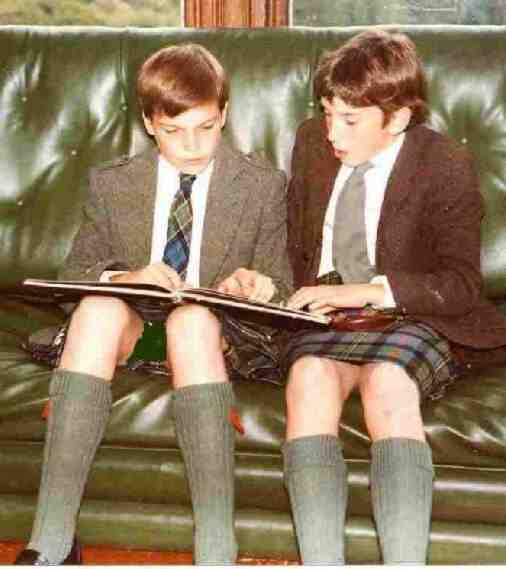
Figure 1.--Kilts at this Scottish preparatory school were worn as their formal or for special occasions. |

|
The wearing of the kilt varies widely among Scottish schools. Basically
the kilt is virtually never worn at state schools, except perhaps by a
pipe band. The kilt is still an important part of the uniform as private
schools. Virtually no state school uses the kilt as part of the school uniform.
Many state schools have iniforms. The primary school children generally
wear grey or colored jumpers and grey or blaclk pants. Until the 1980s the
boys often wore short pants, but now wear mostly long trousers. The secondary
schools often have uniforms with black blazers and black long pants. None
of these schools employ the kilt. The only exception I know of is the
King Edward VII School in Dumfrees??, a boarding school for ??? run by the
Gocernment. The uniform there is normally long short pants, but kilts for
dress occasions. Scottish private schools, in contrast, commonly have a kilt for
their dress uniform. These kilts are very expensive. An Edinburgh
outfitter in 1999 advertised kilts which are hand sewn and take 8 yards
of material. The cost of 13oz wool worsted was £299 pounds (about $500)
and heavyweight or specially woven worsted tartan £400 pounds (about $600).
Because of the cost and the fact that boys are so hard on their
clothes, it is reserved for church on Sunday or other special occasions.
Usually the boys wear blazers and long or short pants to school. On
special occasions the kilt is worn, usually with tweed jackets.
A Scottish reader reports that "No one wears kilts and never did even in the north, I would imagine that if you came to Scotland you could go from north to south and never see anyone wearing one. The tartan shops are mainly for the tourists." HBC concurs that kilts are in the second half of the 20th century were not commonly worn to school, however we have noted them at many private schools.
The wearing of the kilt varies widely among Scottish schools. Basically
the kilt is virtually never worn at state schools, except perhaps by a
pipe band. The kilt is still an important part of the uniform as private
schools. Virtually no state school uses the kilt as part of the school uniform.
Many state schools have iniforms. The primary school children generally
wear grey or colored jumpers and grey or blaclk pants. Until the 1980s the
boys often wore short pants, but now wear mostly long trousers. The secondary
schools often have uniforms with black blazers and black long pants. None
of these schools employ the kilt. The only exception I know of is the
King Edward VII School in Dumfrees??, a boarding school for ??? run by the
Gocernment. The uniform there is normally long short pants, but kilts for
dress occasions.
Scottish private schools, in contrast, have used the kilt as part of the uniform, although practices vary from school to school.
A HBC reader at Greenock Academu reports that although he wore the kilt to church as a boy. he and his froends never war it to school. Greenock was a private academy, but received government funds. School fees were lower than at some ither Scottish schools.
HBC has noted that boys at several Scottish private schools did wear kilts. By the 1980s they were usually worn for special occasions. We know less about the 1950s-70s. A few boys at some private schools did wear kilts at school, but at several schools the dress uniform for all boys was the kilt. A substantial number of private Scottish schools used kilts as part of the uniform in the 1980s--both preparatory and secondary schools. It
was commonly worn as the dress uniform. By the 1980s, HBC does not know of any school where it was the principal dat time uniform, but we believe this was the practice at some schools dearlier.
One factor which may have made the kilt less common in Scottish schools is the expense. These kilts are very expensive. An Edinburgh outfitter in 1999 advertised kilts which are hand sewn and take 8 yards of material. The cost of 13oz wool worsted was £299 pounds (about $500) and heavyweight or specially woven worsted tartan £400 pounds (about $600). Because of the cost and the fact that boys are so hard on their
clothes, it is reserved for church on Sunday or other special occasions.
Usually the boys wear blazers and long or short pants to school. This may explain why it became mostly used for special occasions, usually with tweed jackets
Related Chronolgy Pages in the Boys' Historical Web Site
[Main Chronology Page]
[The 1900s]
[The 1910s]
[The 1920s]
[The 1930s]
[The 1940s]
[The 1950s]
[The 1960s]
[The 1970s]
[The 1980s]
[The 1990s]
[The 2000s]
Navigate the Relate Boys Historical Clothing Uniform Garment Pages
[Return to the Main Scottish school kilt page]
[Main school kilt]
[Blazers]
[Bookbag]
[Caps]
[Coats]
[Hose]
[Kilts]
[Pants]
[Shirts]
[Shoes]
[Smocks
[Suits]
[Seaters]
[Ties]
Navigate the Boys' Historical Clothing School Uniform Country Pages
[Main School Uniform Page]
[Main National School Uniform Page]
[Australia]
[England]
[France]
[Germany]
[Ireland]
[Italy]
[Japan]
[New Zealand]
[Poland]
[Singapore]
[Scotland]
[Singapore]
[United States]
Navigate the Boys' Historical Clothing Web Page
[Introduction]
[Activities]
[Biographies]
[Chronology]
[Cloth and textiles]
[Clothing styles]
[Countries]
[Topics]
[Bibliographies]
[Contributions]
[FAQs]
[Glossaries]
[Images]
[Links]
[Registration]
[Tools]
[Boys' Clothing Home]
